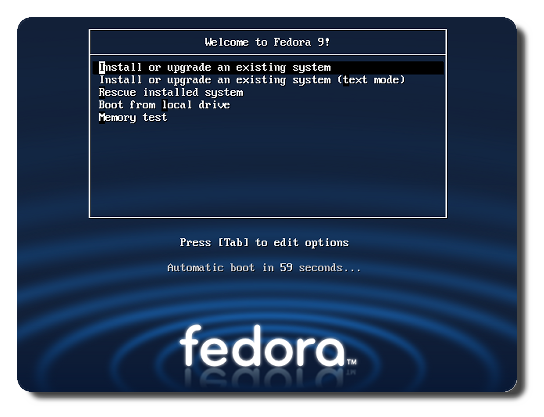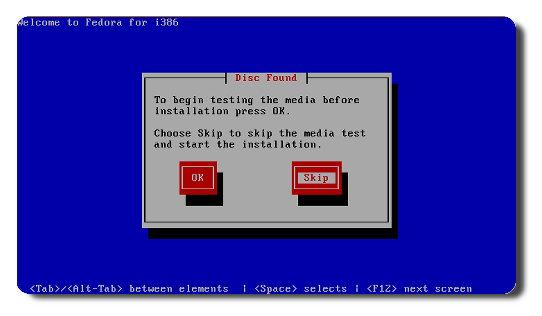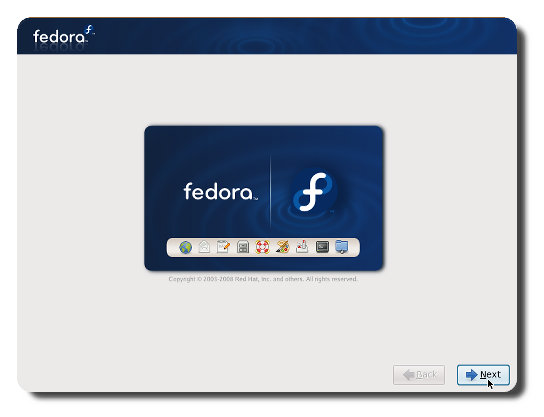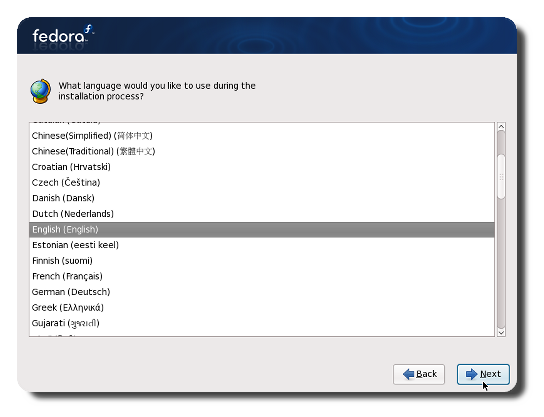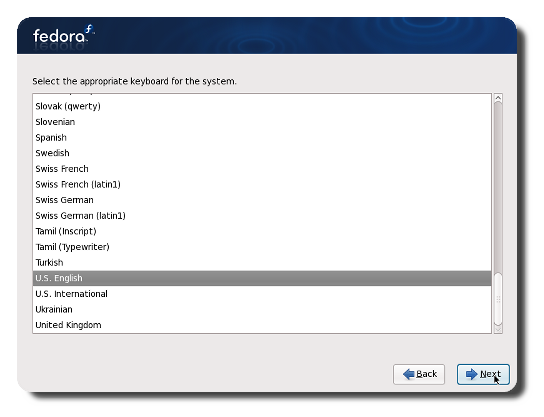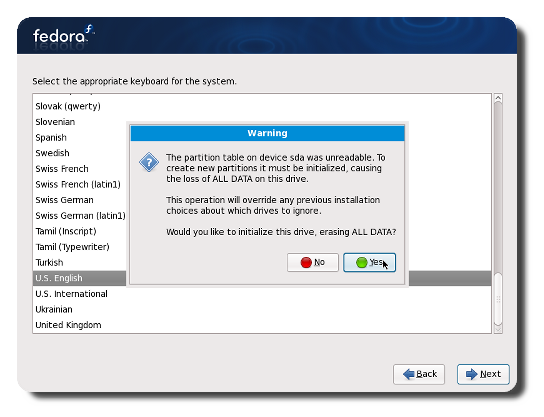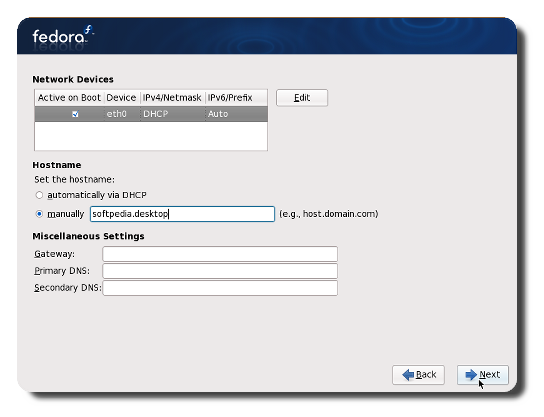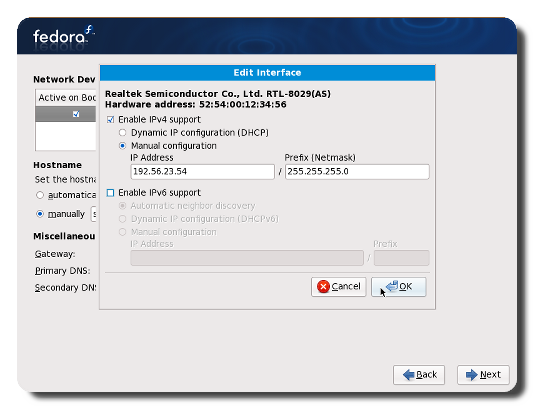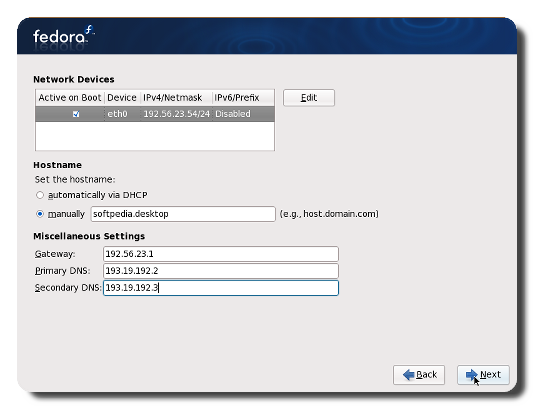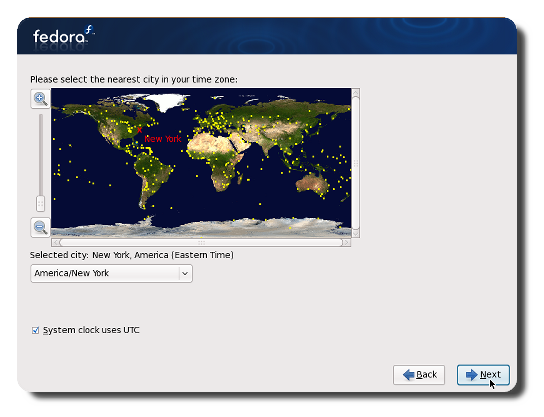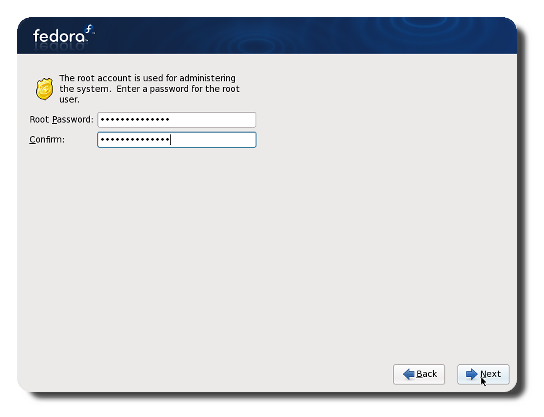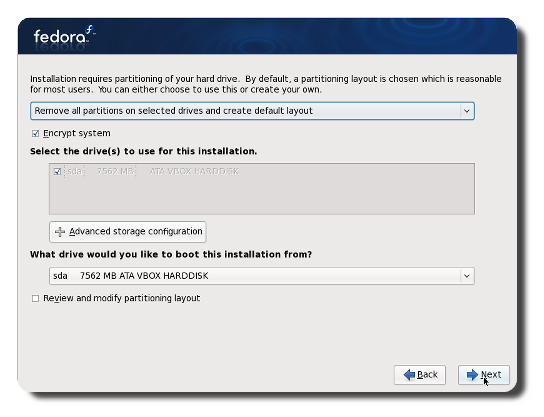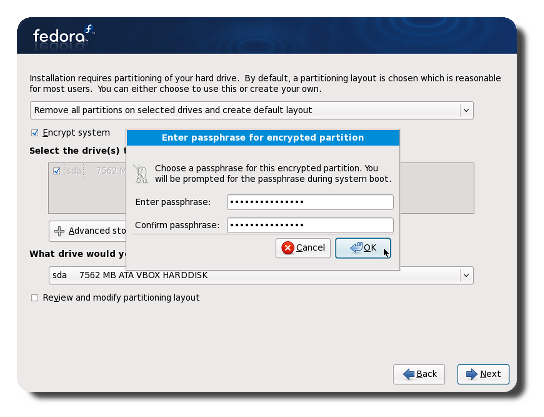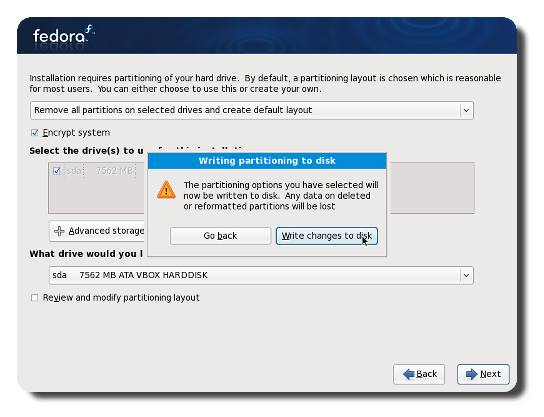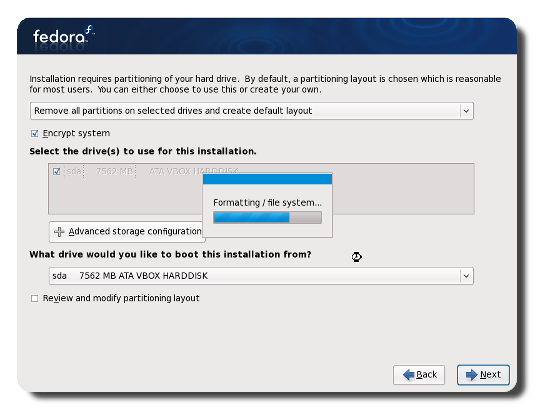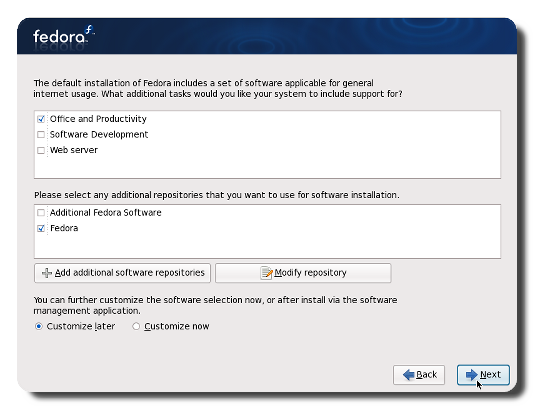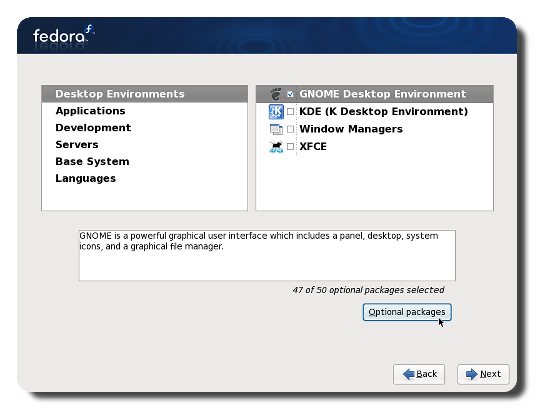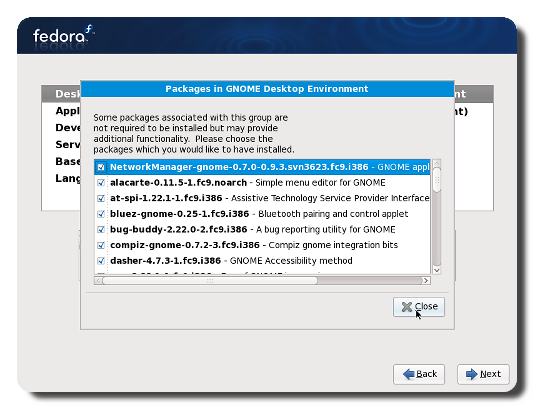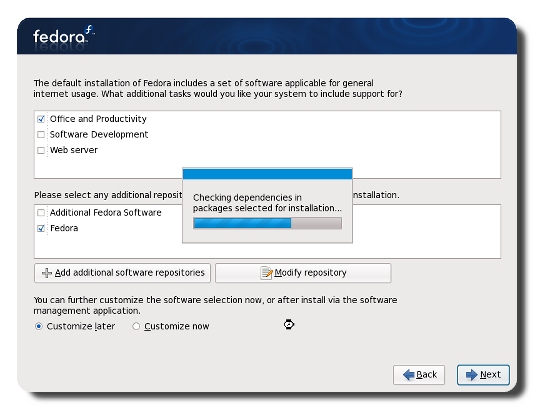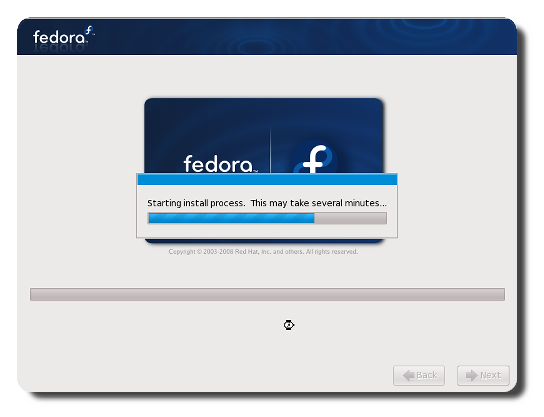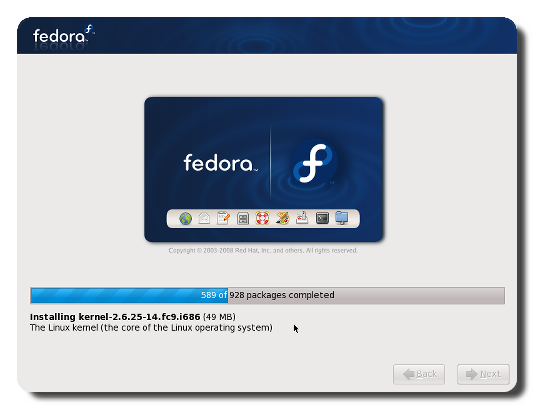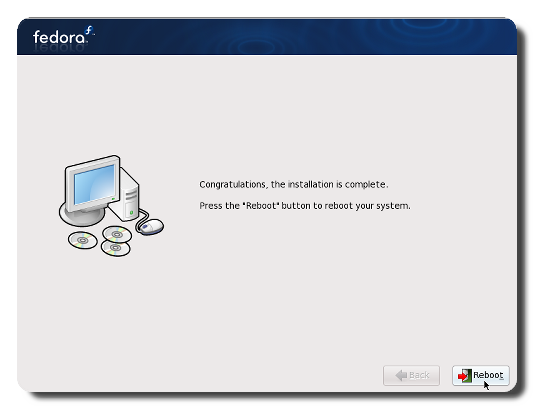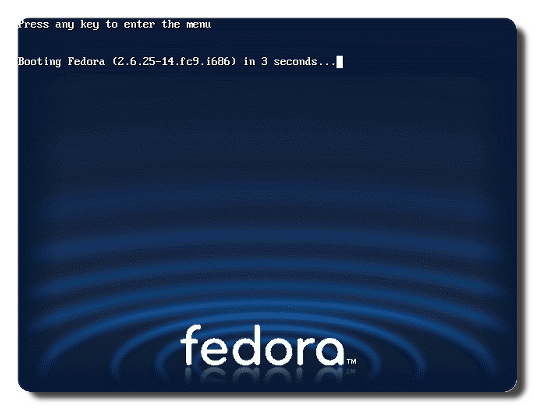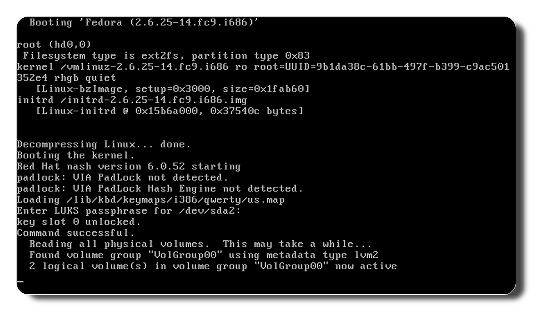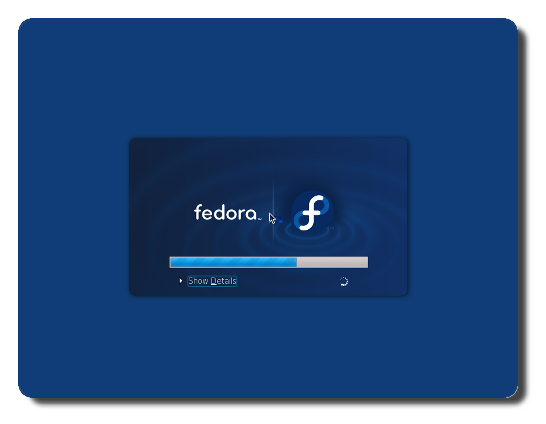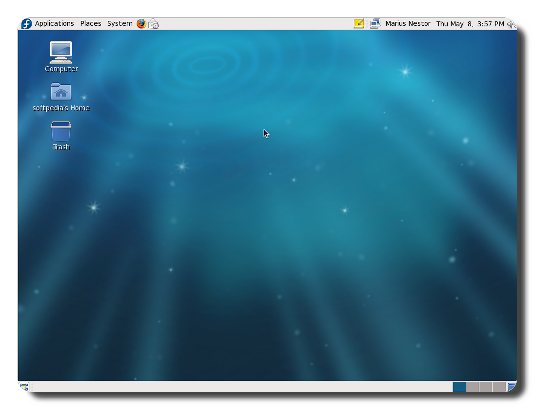Fedora 9 (codename Sulphur) was released today and it's the most breathtaking version of the Fedora operating system. Not only does this release bring support for encrypted filesystems (implemented in the installer), but it's also one of the best Fedora releases yet!
We, here at Softpedia Labs, always recommend having an empty hard drive for a Linux installation (that means no other operating system on it, no Windows) and you must have a minimum of 10 GB free space for the Fedora installation. Great, now let's begin.
For this installation, we used the Install DVD, because it contains all the software you'll ever need. However, the DVD edition has about 3 GB in size and, if you don't have the necessary bandwidth to download it, then we strongly recommend you get one of the KDE or the GNOME Live CD editions. Burn it on a blank disc with your favorite CD/DVD burning application, then insert the disc in the optical drive of the computer on which you want to install Fedora and boot from it. You'll be presented with a very nice Fedora artwork GRUB splash and some options. At this stage, we simply suggest you press Enter, and wait for the system to load...
Select the 'Skip' option when you're asked if you want to check the media before installation and press the Enter key on your keyboard...
Anaconda (the Fedora installer) will load and you'll see the welcome screen. Click 'Next'...
Choose your language...
Choose your keyboard layout...
A warning message about the hard drive partitions may appear. If so, click the 'Yes' button...
It's time to setup your network. If you have a DHCP network (dynamic IP address) you can click Next right now, but if you have a static IP address (ask your provider if you're not sure) click the 'Edit' button and follow the instructions below.
- If you have an IPv4 address, make sure it's enabled. If you have an IPv6 address, make sure it's enabled too (if you don't have an IPv6 address, uncheck the 'Enable IPv6 support' option). - Check the "Manual configuration" option and enter your IP address and the Netmask (ask your provider if you don't know them). Do the same for the IPv6 address (if you have one). - Click OK once you've finished. - Select the 'manually' option. - Optional, you can setup the system's hostname (e.g. john.fedora.linux). - Enter your Gateway and Primary/Secondary DNS servers (ask your provider if you don't know them).
When you're done with the network configuration, click 'Next' and you will be asked to select your location (country/city)...
Once you've selected your timezone, click next and you must enter the root (System Administrator) password. The longer, the better (WRITE IT SOMEWHERE OR MEMORIZE IT)...
Here comes the partitioning part! If you have an empty hard drive, all you have to do is click 'Next' (make sure the "Remove all partitions on selected drives and create default layout" option is selected). If you don't have an empty hard drive and you still want to install Fedora 9 on your machine, then make sure you select the "Use free space on the selected drives and create default layout" option (10 GB minimum of free space is required). Click 'Next'...
Encryption is supported in this release and you can enable it with a single mouse click, by checking the "Encrypt system" option!
Click the 'Write changes to disk' button when asked...
The hard drive will be formatted and the partitions will be created...
Now you can select the desired packages (or not)...
Hit the 'Next' button and everything will be done automatically from now on, just sit back and watch how the partitions are formatted and the software packages are copied to your hard drive, or you can read the latest news while enjoying a cup of coffee. The installation process will take about 8-10 minutes (depending on your computer specs and the selected packages).
When the installation is over, you will get a "Congratulations, the installation is complete" screen. Click the 'Reboot' button and your computer will automatically restart...
Remove the DVD from your optical drive and your brand new Fedora 9 Linux operating system will start for the first time...
If you've chosen to encrypt your filesystem, then you'll be prompted for the passphrase...
The system will boot...
And, before you reach the Fedora desktop, you must do a one-time general system configuration. That's it! Now log in to your new Linux operating system and enjoy the ultimate, spectacular, breathtaking Fedora 9 Linux distribution!

 14 DAY TRIAL //
14 DAY TRIAL // 